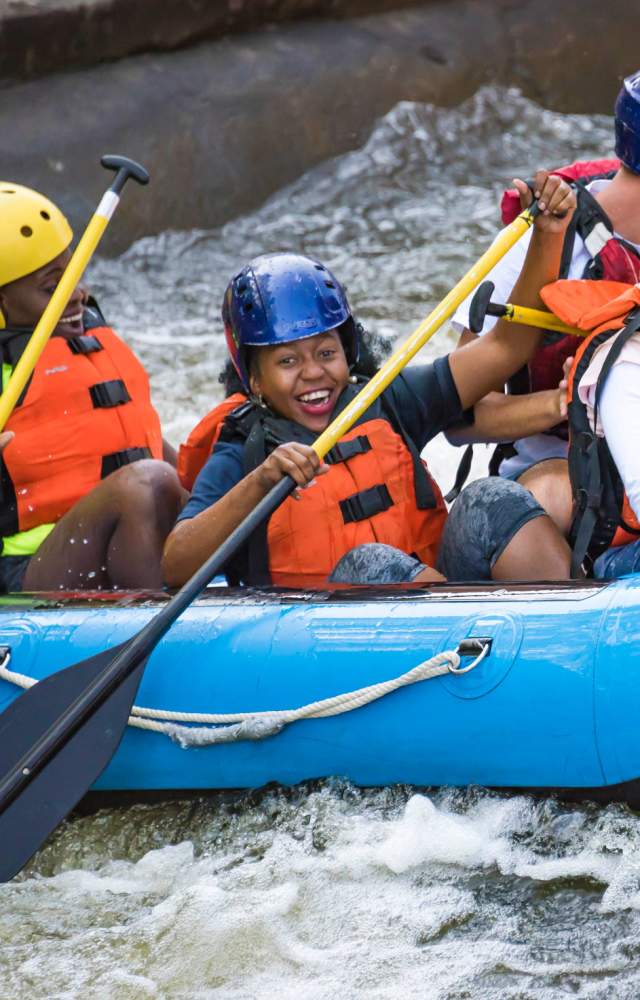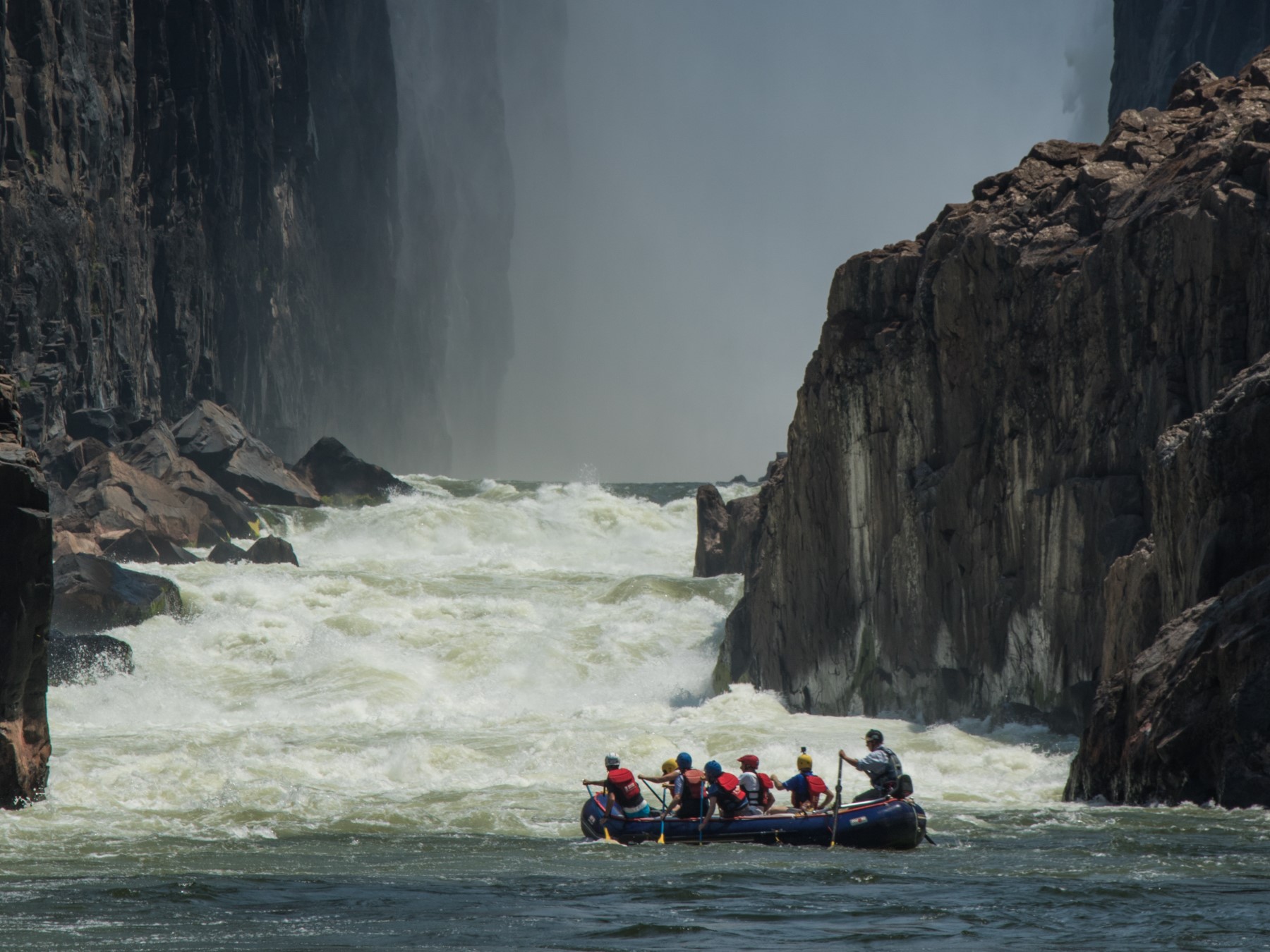Discover the Best White Water Rafting Colorado Needs To Offer
Discover the Best White Water Rafting Colorado Needs To Offer
Blog Article
The Ultimate Adventure: Water Rafting Tips and Techniques
Embarking on a water rafting journey is an awesome experience that requires a mix of skill, prep work, and respect for nature's formidable forces (White Water Rafting Colorado). As the rush of the river pushes you onward, navigating via twists and transforms, the art of water rafting unveils itself as an examination of both physical expertise and mental acuity. From selecting the proper equipment to recognizing the subtleties of paddling methods, the journey down the river holds triumphs and difficulties waiting to be conquered. However what really distinguishes an amateur from a skilled rafter lies not simply in the mastery of abilities, yet in the finesse with which one approaches the unpredictable dancing with the currents.
Essential Gear for Water Rafting
To guarantee safety and convenience throughout water rafting expeditions, it is important to gear up oneself with the crucial equipment tailored to this daring task. The first and most critical tool is a well-fitted individual flotation protection device (PFD) or life vest. This is non-negotiable for all rafters, as it gives buoyancy in case of unintended immersion in water. Additionally, a tough headgear is vital to secure versus head injuries, specifically in rough waters or if thrown off the plethora.
Additionally, correct shoes is crucial for maintaining good grip and shielding the feet from sharp rocks or unsafe surfaces. Neoprene booties or water footwear are suggested for this objective. It is also suggested to use quick-drying garments, such as a wetsuit or breakout guard, to manage body temperature and protect against hypothermia in cool water conditions.
Lastly, a reputable paddle is needed for maneuvering via the water efficiently. It ought to be lightweight yet resilient to endure the roughness of rafting. By spending in these vital pieces of gear, rafters can enjoy their experience on the water with self-confidence and satisfaction.
Choosing the Right Rafting Course
When intending a water rafting adventure, selecting the ideal rafting route is important for a risk-free and enjoyable experience. Elements such as the level of problem, water problems, and the length of the course should all be thought about prior to starting your journey.
Most importantly, evaluate your team's ability level and experience. Different rafting routes are classified based on problem degrees varying from Course I (easy) to Course VI (incredibly hard and unsafe) It is very important to pick a course that aligns with the abilities of all individuals to make sure every person's security and pleasure.
Additionally, take into consideration the water problems of the route. Some paths may have tranquil waters appropriate for novices, while others may have strong currents and difficult rapids that call for advanced abilities. Looking into the water degrees and prospective threats of the course in advance can assist you make an educated choice.
Last but not least, think about the length of the rafting route. Longer routes might call for even more time and stamina, so select a route that fits within your team's timeframe and physical capabilities. By very carefully picking the appropriate rafting path, you can establish yourself up for a exhilarating and remarkable experience on the water.
Security Preventative Measures on the Water
Considering the significance of selecting the right rafting route for a delightful and secure experience, it is vital to prioritize safety and security preventative measures on the water to reduce possible dangers and make certain an effective journey. Prior to starting a water rafting trip, make certain all individuals put on properly fitting personal flotation protection devices (PFDs) and helmets to protect against accidents. It is important to listen diligently to the guide's safety and security briefing, which commonly covers paddling strategies, what to do in situation the boating flips, and exactly how to help others if needed. Preserving communication with the guide and fellow rafters is crucial throughout the trip to coordinate activities and react promptly to any type of signals or instructions. In the occasion of someone dropping over the top, adhere to the guide's directions for swift and effective rescue procedures. Be mindful of the water conditions, such as obstacles and rapids, and adapt your paddling techniques as necessary to browse safely through the training course. By sticking to these safety and security precautions, you can enhance the overall experience and reduce prospective risks while water rafting.
Understanding Paddling Techniques
Creating effectiveness in paddling techniques is crucial for browsing via varying water conditions and guaranteeing a successful water rafting experience. White Water Rafting Colorado. Correct paddling not just assists in steering the raft properly but also adds to the total sychronisation and team effort needed for a risk-free and satisfying journey
One of the essential paddling strategies is the forward stroke. This stroke entails dipping the paddle blade completely into the water and drawing it back together with the boating, giving propulsion and steering. The backward stroke, on the various other hand, is critical for reversing or slowing down down the plethora. By understanding the forward and backwards strokes, rafters can successfully manage the speed and direction of the boating.

Tips for Handling Rapids Like a Pro
To succeed in browsing difficult river conditions, skilled water rafters use their grasped paddling methods with precision and finesse when handling rapids like seasoned experts. This rhythm helps the plethora maintain its program and security amidst the turbulent waters.

Verdict
To conclude, water rafting needs important gear, cautious route option, safety preventative measures, understanding paddling methods, and dealing with rapids with know-how (White Water Rafting Colorado). By adhering to these pointers and techniques, adventurers can make sure a effective and delightful view it now rafting experience on the water. Remember to always focus on safety and be planned for the challenges that come with navigating through rapids. With technique and knowledge, any individual can become a competent water rafter.

Considering the importance of picking the right rafting course for a satisfying and safe experience, it is vital to focus on safety preventative measures on the water to mitigate prospective dangers and ensure a successful journey. Inevitably, honing paddling techniques is key to a thrilling and successful water rafting adventure.
In conclusion, water rafting needs necessary equipment, careful path choice, safety precautions, understanding paddling strategies, and dealing with rapids with experience.
Report this page